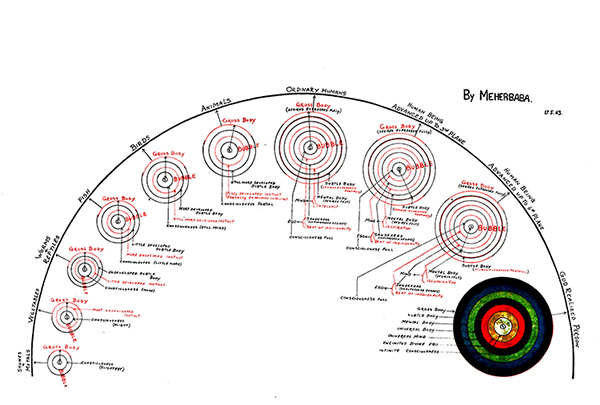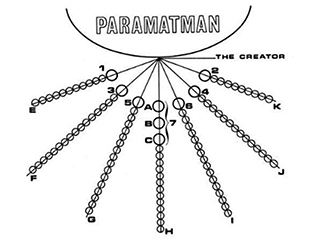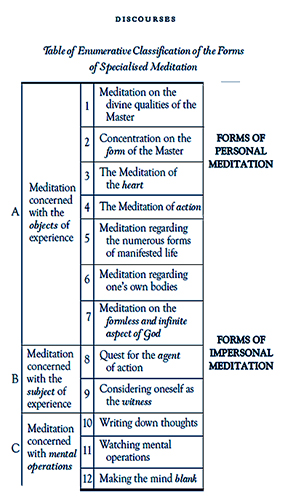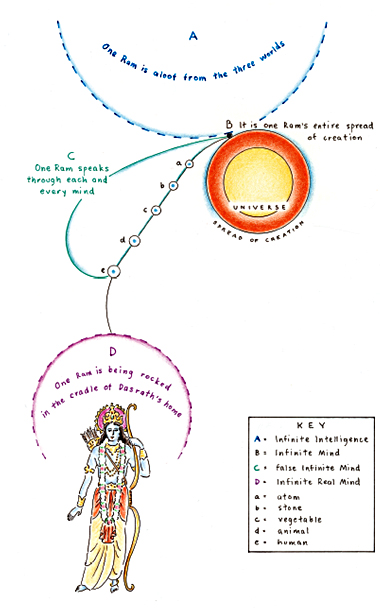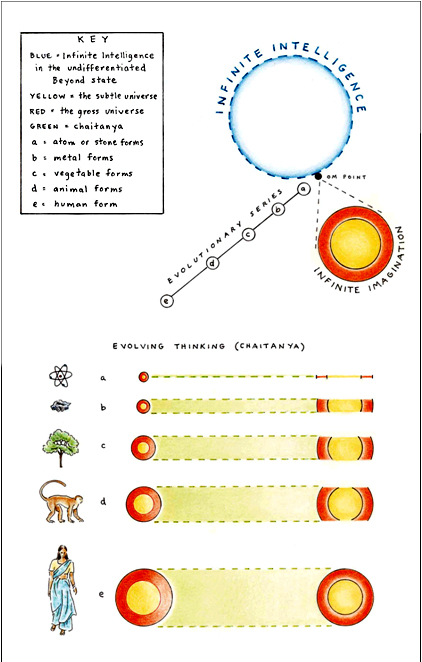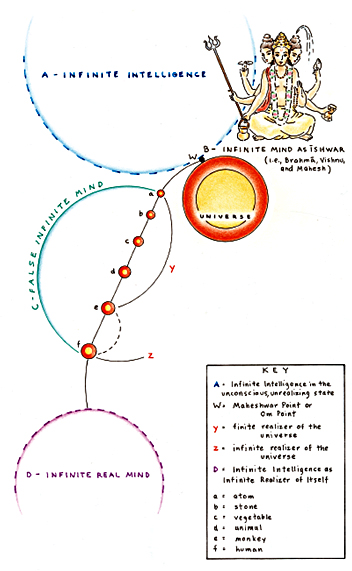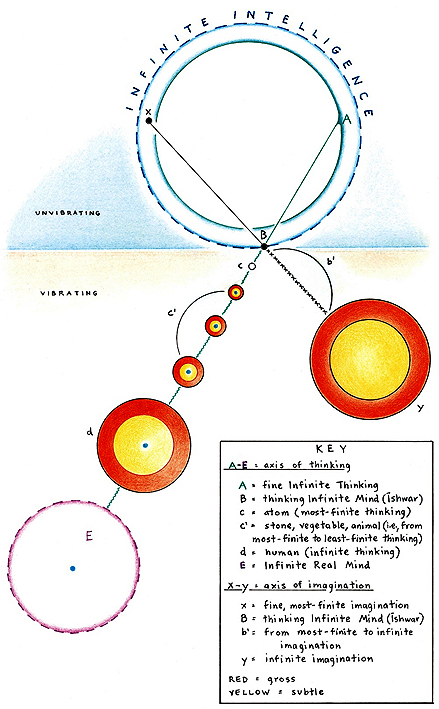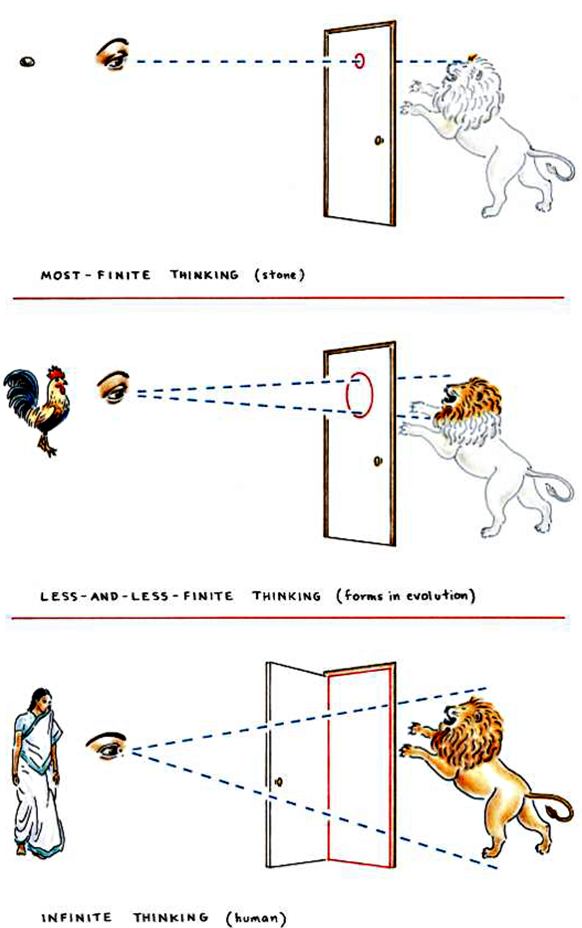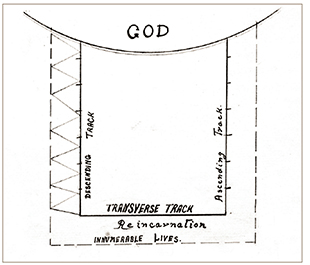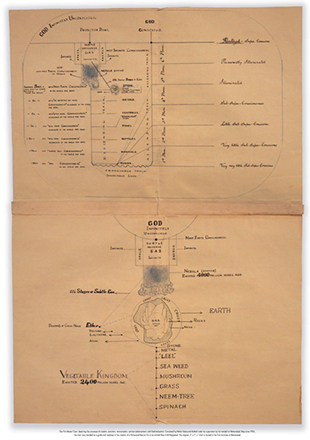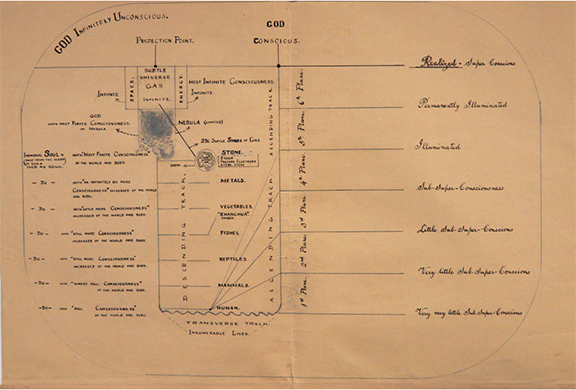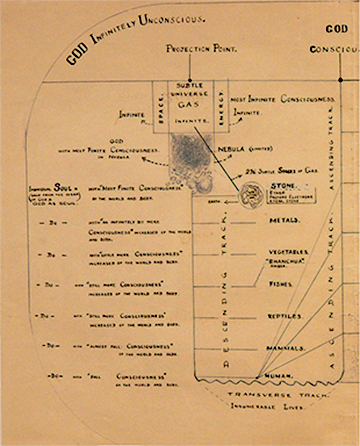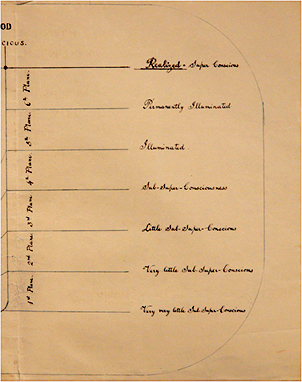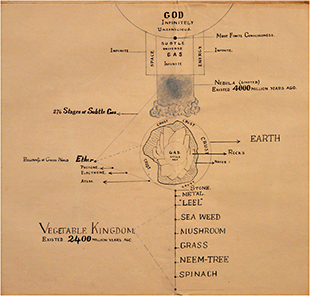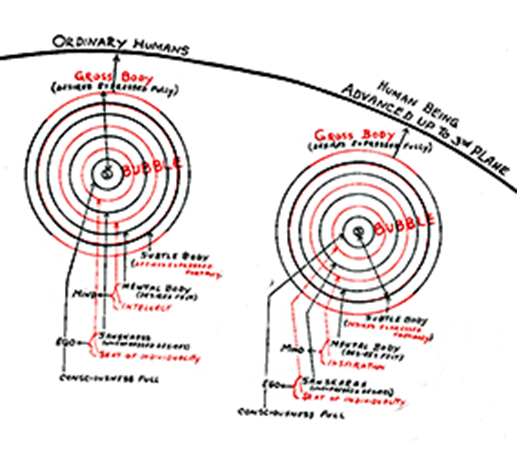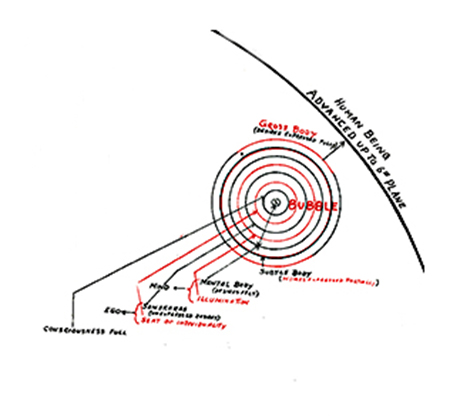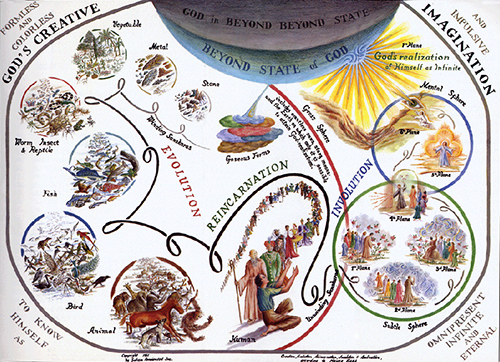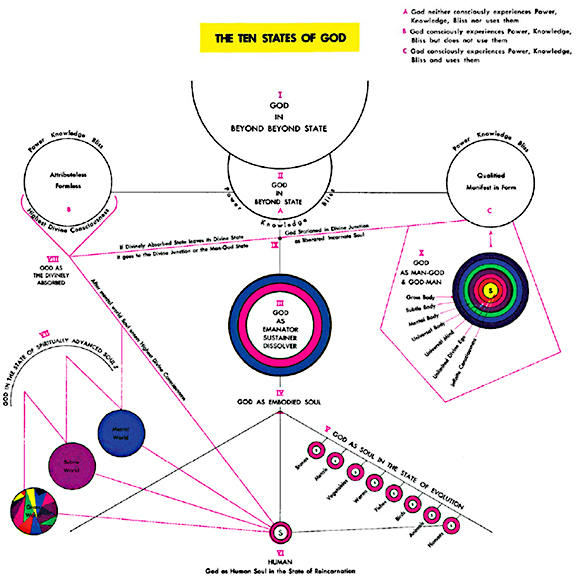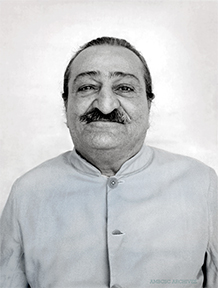THE beginnings of spiritual life are marked and helped by general meditation, which is not concerned exclusively with selected specific items of experience, but which, in its comprehensive scope, seeks to understand and assimilate the Divine Truths of life and the universe. When the aspirant is interested in the wider problems of the ultimate nature of life and the universe and begins to think about them, he may be said to have launched himself upon such meditation. Much of what is included under philosophy is a result of trying to develop an intellectual grasp of the ultimate nature of life and the universe. The purely intellectual grasp of Divine Truths remains feeble, incomplete and indecisive owing to the limitations of the experience which may be available as the foundation of the structures of speculation. The philosophical meditation of free and unaided thought does not lead to conclusive results. It often leads to diverse conflicting systems or views, but philosophical meditation
is not without value. Besides leading the aspirant to a certain extent in the realm of knowledge, it gives him an intellectual discipline which enables him to receive and grasp Divine Truths when he happens to come upon them through those who know.
The more fruitful mode of general meditation consists in studying the revealed Truths concerning life and the universe. This mode of understanding and assimilating the Divine Truths can start from hearing or reading expositions of the Divine Truth which have their source in the Masters of Wisdom.
The discourses of living Perfect Masters or the writings of the Perfect Masters of the past are a suitable object for this mode of general meditation, because the assimilation of Divine Truths, revealed through them, enables the aspirant to bring his life into line with God’s purpose in the universe.
The Divine Truths are most easily grasped and assimilated when they are passed on directly to the aspirant by a living Master. Such personal communications of the Master have a power and efficacy which can never belong to information received by the aspirant through other sources.
The word becomes alive and potent because of the life and personality of the Master. Hence many scriptures emphasise the need for hearing the Divine Truths directly through the spoken word of the Master (Gurumukh).
The mode of general meditation which depends upon hearing expositions of the Divine Truths is undoubtedly the best, when the aspirant has an opportunity to contact a living Master and listen to him. It is not always possible, however, for the aspirant to contact and listen to a living Master. In such case meditation through reading has some advantages of its own. For the generality of aspirants, meditation through reading has hardly any suitable substitute, because it starts from written expositions which are available at any convenient time. Meditation which starts from reading about revealed Truths has this special advantage of being easily accessible to most aspirants. Meditation through reading is explained in Section B and is provided for in Section C.
SECTION B
Reading as Meditation
Meditation through reading has its handicaps, because most written expositions of the Divine Truths are meant for intellectual study rather than for assimilation through meditation.
The difficulties which aspirants experience in this connection are due either (i) to the fact that the method of meditation is not adapted to the subject-matter, or (ii) to some flaw in the method which makes it mechanical and uninspiring, or (iii) to the unwieldiness or vagueness of the subject-matter of meditation.
All these causes, which vitiate meditation and make it unsuccessful, have been avoided in the specific meditation which is recommended in this part.
It is intended not only to explain the manner of carrying on meditation through reading, but also to provide an exposition of Divine Truth in order to fulfill the requirements of this form of meditation. The usual difficulties existing in meditation through reading have been removed in this specific meditation by (i) ensuring that the process of meditation as well as the subject-matter are adapted to eachother and to the conditions of intelligent meditation, (ii) by elaborately explaining the different phases of the meditation which starts from reading, and (iii) by providing a specially prepared brief exposition of the Divine Truths, which would become suitable and valuable subject matter for meditation through reading.
The form of meditation which starts from reading about the Divine Truths has three stages:
(1) In the first stage the aspirant will have to read the exposition daily, and simultaneously think about it thoroughly.
(2) In the second stage actual reading becomes unnecessary, but the subject-matter of the exposition is mentally revived and thought over constantly.
(3) In the third stage it is quite unnecessary for the mind to revive the words in the exposition separately and consecutively, and all discursive thinking about the subject-matter comes to an end. At this stage of meditation the mind is no longer occupied with any train of thought, but has a clear, spontaneous and intuitive perception of the sublime Truth, expressed in the exposition.
Since intelligent meditation consists in thorough thinking about a particular subject, it follows that the best help for meditation would be a brief and clear exposition of the subject of meditation.
The following concise exposition of the Divine Truths (given in Section C) comprises the whole story of creation, as well as a complete account of the Path and the Goal of self-realisation. The aspirant can intelligently read the exposition and assimilate the sublime truths it embodies.
This special form of meditation is extremely easy and useful, because reading the subject-matter and thinking about it have to be done simultaneously.
Further, by making the exposition of the subject-matter clear and concise, the probability of any disturbance arising out of irrelevant thoughts is eliminated. It is extremely difficult to avoid the disturbance of irrelevant thoughts while meditating upon some lengthy article or book, even if it is committed to memory. Spontaneous meditation about it therefore becomes impracticable. The appearance of irrelevant thoughts becomes very probable in lengthy meditation on abstract thoughts, or on some concrete object of experience. But irrelevant thoughts are extremely improbable if the subject-matter of meditation consists of a brief exposition of the Super-sensible Truth. If the aspirant meditates upon the following exposition of the Divine Truths in the manner which has been elaborately indicated above, meditation will become not only spontaneous and easy, delightful and inspiring, but also helpful and successful. He will thus be taking a very important step towards the realisation of the goal of life.
Section C
The Divine Truths
(for meditation through reading)
THE JOURNEY OF THE SOUL TO THE OVERSOUL
Atman, or the soul, is in reality identical with Paramatman, or the Oversoul, which is One, Infinite and Eternal. The soul is, in fact, beyond the gross, subtle and mental worlds, but experiences itself as being limited owing to its identification
with the Sharira or gross body, Prana or the subtle body (which is the vehicle of desires and vital forces), and Manas or the mental body (which is the seat of the mind). The soul in its transcendental state is One—Formless, Eternal and Infinite—and yet identifies itself with the phenomenal world of forms, which are many and finite and destructible. This is Maya or the cosmic illusion.
The phenomenal world of finite objects is utterly illusory and false. It has three states: (1) the gross, (2) the subtle and (3) the mental.
Although all these three states of the world are false, they represent different degrees of falseness. Thus the gross world is farthest from Truth (God), the subtle world is nearer Truth, and the mental world is nearest to Truth. All three states of the world owe their existence to cosmic illusion which the soul has to transcend before it realises the Truth.
The sole purpose of creation is that the soul should be able to enjoy the infinite state of the Oversoul consciously. Although the soul eternally exists in and with the Oversoul in an inviolable unity, it cannot be conscious of this unity independently of the creation, which is within the limitations of time.
It must therefore evolve consciousness before it can realise its true status and nature as being identical with the Infinite Oversoul, which is One without a second. The evolution of consciousness required the duality of subject and object—the centre of consciousness and the environment (i.e., the world of forms).
How does the soul get caught up in the illusion? How did the Formless, Infinite and Eternal Soul come to experience itself as having form, and as being finite and destructible? How did Purusha, or the Supreme
Spirit come to think of itself as Prakriti or the world of nature? In other words, what is the cause of the cosmic illusion in which the soul finds itself?
To realise the true status of the Oversoul, which is One, Indivisible, Real and Infinite, the soul needed consciousness. The soul did get consciousness, but this consciousness was not of God but of the universe; not of the Oversoul but of its shadow; not of the One but of many; not of the Infinite but of the finite; not of the Eternal but of the transitory. Thus the soul, instead of realising the Oversoul, gets involved in the cosmic illusion, and hence, though really infinite, it comes to experience itself as finite. In other words, when the soul develops consciousness it does not become conscious of its own true nature but of the phenomenal world, which is its own shadow.
In order to become conscious of the phenomenal world the soul must assume some form (as its medium) for experiencing the world, and the degree and kind of consciousness are determined by the nature of the form which is used as a medium. The soul first becomes conscious of the gross world by assuming a gross body. The consciousness of the gross world which it has in the beginning is of the most partial and rudimentary type.
Correspondingly the soul assumes the most undeveloped form (e. g., that of stone), with which evolution begins. The driving force of evolution is constituted by the momentum which consciousness receives owing to the conservation of the impressions (sanskaras) left by diverse desires or conditions. Thus the sanskaras cultivated in a particular form have to be worked out and fulfilled through the medium of a higher form and a correspondingly more developed consciousness of the gross world. The soul, therefore, has to assume higher and higher forms (like metal, vegetable, worm, fish, bird and animal) until at last it assumes a human form, in which it has developed full consciousness (in all the aspects of knowing, feeling and willing) of the gross world.
Divine Theme Chart One
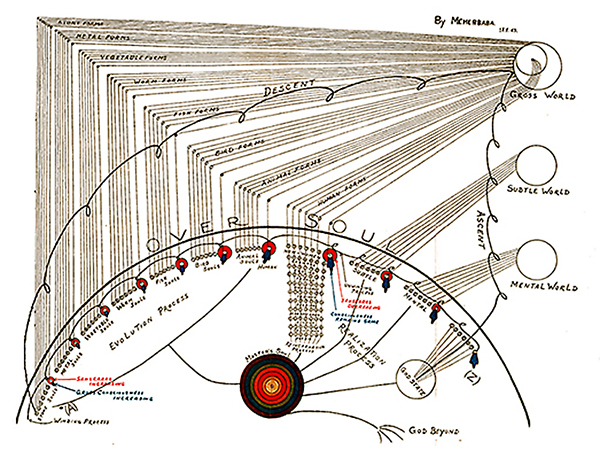
Divine Theme Chart Two
